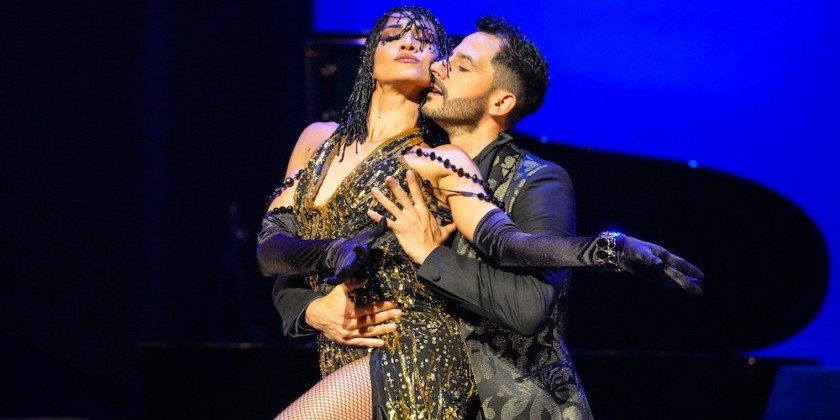Audience Reviews >
AUDIENCE REVIEW: The Oberlin Dance Company with the Contemporary Music Ensemble
Company:
The Oberlin Dance Company with the Contemporary Music Ensemble
Performance Date:
05/12/2012
Company / Show / Event
The Oberlin Dance Company with the Contemporary Music Ensemble
Performance Date
05/12/2012
Venue / Location
Hall Auditorium, Oberlin College, Oberlin OH
A bit about you:
(your occupation, the last time you moved, your website, etc.)
I'm a dance major at Oberlin College and an ADF alum from Lexington, VA. I've just started to explore making works for the camera:https://vimeo.com/channels/silviascreendance
Freeform Review:
The Oberlin College Theater and Dance 2011–2012 performance season culminated May 11th and 12th in Hall Auditorium with a collaborative concert featuring both the Oberlin Dance Company and the Contemporary Music Ensemble. Choreographed by Carter McAdams and conducted by Tim Weiss, the performance was a success, a diverse program of contemporary dance and dance theater. For me, the most arresting piece was one of McAdams's two new works, "last light," which featured the music of Peter Swendsen.
When the house lights dim after intermission, the stage remains dark just a little longer than normal. Audience members squint into black, intent on catching the first glimpse of movement. Slowly, the lights begin to unveil layers of misshapen, pale, almost iridescent orbs, levitating low over the left side of the stage. A subtle soundscape, slightly eerie, without rhythm or notes, increases in volume, and the still brightening lights reveal the ghostly moons to be the bare backs of dancers. They are curled over, still. I am struck by the simple beauty of their skin and of the natural contours of their buttocks, visible through their costumes. Then their backs begin to move, and it is like watching long-still stones awakening and returning to the magma from which they originated. Their knobbly spines look vulnerable in the ghostly light, but the rippling and contorting muscles of their backs and shoulders relay an inner fire. When the lights begin to dim and the dancers exit the stage, I find myself longing for the moment to last longer. I am not ready to let it go.
The dancers re-emerge, forging a pathway across the front of the stage. Keeping grounded on the floor, they slip over each other. They are like creatures, working their way across the front in an organic chain of bodies. As they continue on their journey, two much taller figures emerge from the upstage wings. One dancer perched atop another’s shoulder, they sway across the stage like a dried dandelion in the breeze.
Suddenly, the dancers break out of their amorphous journey into sharp skittering movements. Slow, then sharp, then slow: I never know when they’re going to break out. The volume and intensity of the soundscape increase with static and undulating cello to match and further propel the dancers.
Three dancers are left alone on stage, gazing intently, almost ferociously, off into the wings. They stand with one hand raised, trembling, not with fatigue but with a surplus of nervous energy. The sound of wind crescendos as they stare out into the beyond. They have gone — or have always been — somewhere the audience cannot access.
An ominous drumroll tosses all of the dancers back onstage, rolling like tumbleweeds across a barren desert. They rise and begin to dance with a just-contained nervous energy. Their fingers flick to the sounds of electronic rain-on-a-tin-roof. It seems that they are almost going to break through whatever it is that is holding back the frenzy, but instead they return to stillness. Or, almost. One dancer’s tremoring hand takes her away, and she skitters and skates across the stage like a bug across a pond, moving over the surface, but never breaking it. This is in keeping with much of the piece; the dancers and musicians are constantly testing a surface tension to its limits.
One at a time the dancers break into movement, only to hold still in rigid shapes — like a plank — then melt out of them to repeat the process. Finally, the eerie music fades, and the space feels less ominous. The dancers re-organize themselves into groups and move into an adagio.
When the sound fades away completely and the dancers are left, trembling and reaching, I’m left feeling like perhaps we’ve all been contained in the eye of a deep storm. We’ve been pushed toward the edges at points, enough to sense the fury that encircles us. And though we end in the center of the calm, we can’t quite forget that other world outside our muted perimeter.













